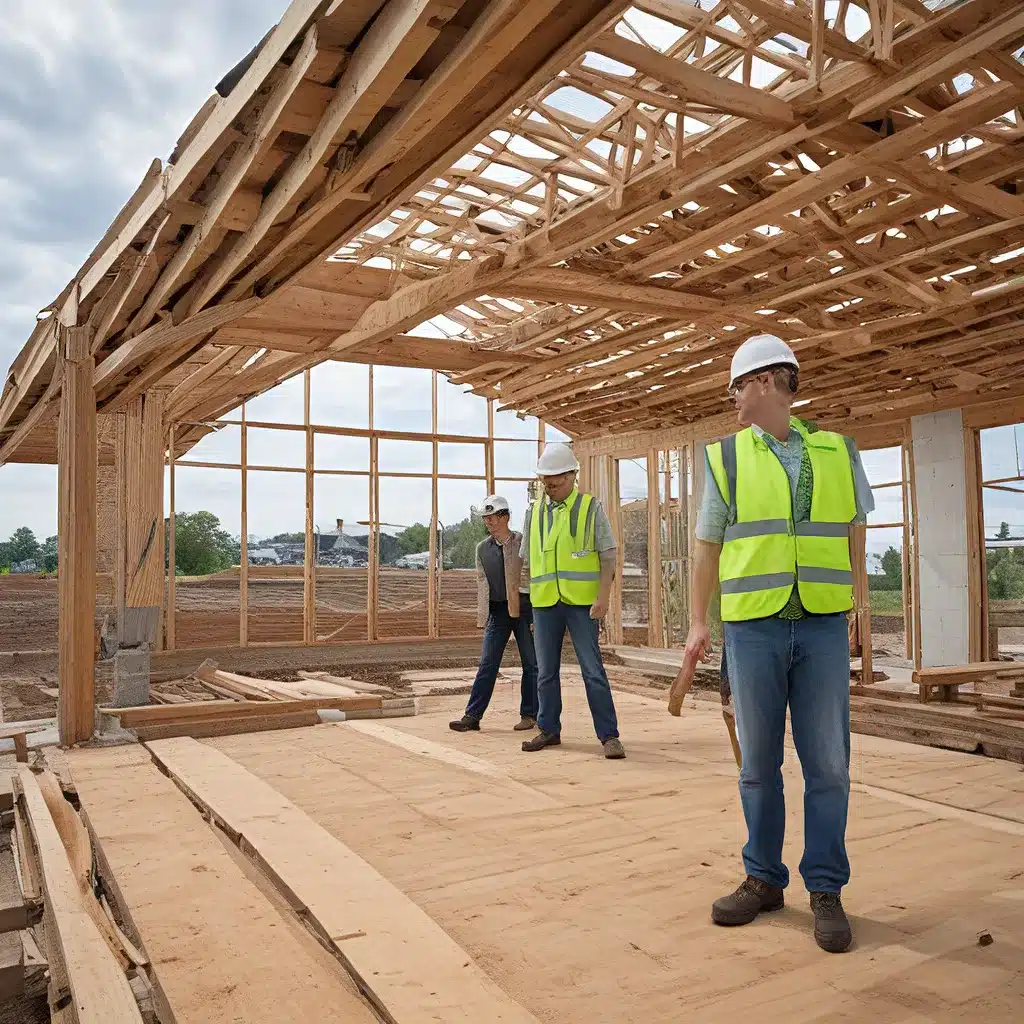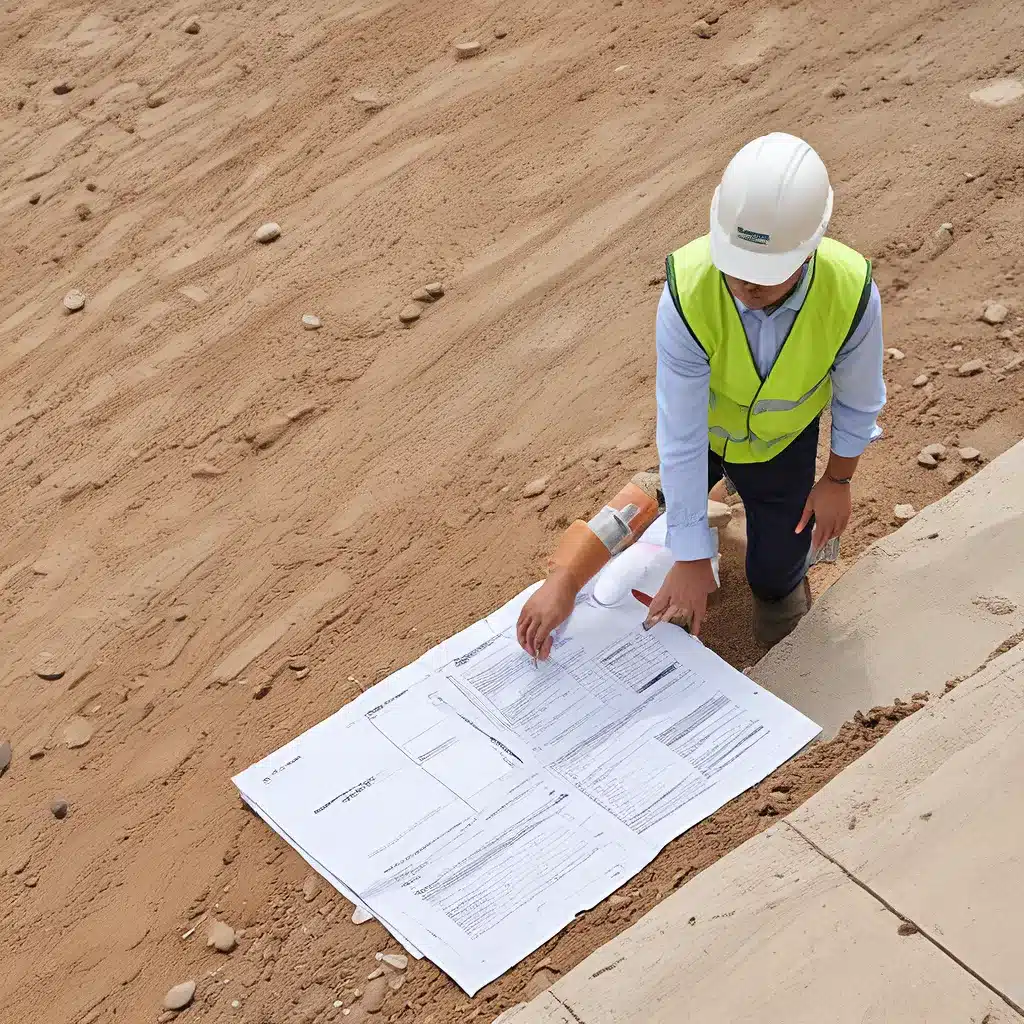
The Concrete Case for Sustainable Construction
Picture this – you’re standing in front of a towering structure, its walls gleaming with an impenetrable strength that defies the elements. This isn’t your average building, my friends; this is a masterpiece of sustainable construction, where the power of concrete and insulation have been harnessed to create a fortress of resilience and energy efficiency. Welcome to the world of Insulated Concrete Forms (ICFs), the secret weapon in the fight for a greener, more resilient future.
As the vice president of strategic development at Reading General Contractor, I’ve seen firsthand how this unsung hero of the construction industry is poised to revolutionize the way we build. Let me tell you, it’s not just about slapping some solar panels on a roof and calling it a day. No, my friends, we’re talking about a holistic approach to construction that puts sustainability at the heart of every decision.
Weathering the Storm: The Resilience of ICFs
One of the biggest selling points of ICFs is their exceptional resilience against natural disasters. Picture a hurricane howling outside, trees snapping like twigs, and the rain battering the walls. But inside, your clients are safe and sound, cocooned in the sturdy embrace of an ICF structure. These bad boys can withstand the fury of Mother Nature, shrugging off the impact of flying debris, high winds, and even earthquakes.
“ICFs stand out for their exceptional resilience against natural disasters like hurricanes, tornadoes, wildfires, and earthquakes, making them one of the safest construction methods available.”
And it’s not just about the safety of the structure itself – it’s about the peace of mind it provides to the people who call it home. Imagine the relief of knowing that your family is protected, that your investment is secure, and that you can weather any storm that Mother Nature throws your way.
Slashing Energy Costs, Saving the Planet
But the benefits of ICFs don’t stop there, my friends. Let’s talk about energy efficiency, the unsung hero of the sustainable construction world. These insulated concrete marvels boast a level of energy efficiency that’ll make your clients do a happy dance. We’re talking about up to 44% energy savings compared to traditional wood-framed structures. That means lower utility bills, less strain on the power grid, and a smaller carbon footprint.
“ICF buildings boast remarkable energy efficiency, conservatively exhibiting up to 44% energy savings compared to traditional wood-framed structures.”
And let’s not forget the long-term impact. As the world grapples with the challenges of climate change, the need for sustainable construction has never been more pressing. By embracing ICFs, you’re not just building a beautiful, energy-efficient structure – you’re contributing to a greener, more resilient future for generations to come.
From Cradle to Grave: The Lifecycle of Sustainable Construction
But the sustainability of ICFs doesn’t stop at the energy savings. No, my friends, we’re just getting started. Let’s dive into the cradle-to-grave lifecycle analysis, where the true power of these concrete marvels shines through.
First, let’s talk about the embodied carbon footprint. While the production of concrete does have its own environmental impact, it’s a drop in the bucket compared to the emissions associated with other building materials, like steel and wood. In fact, according to the Portland Cement Association, the ready-mixed concrete industry has reduced its embodied carbon footprint by over 22% in the last decade. That’s a massive achievement, and one that’s only going to continue to improve as technology and materials evolve.
“The PCA, the NRMCA, and MIT’s Concrete Sustainability Hub have spearheaded efforts to lower the embodied carbon footprint of ready-mixed concrete, making significant contributions to reducing the environmental impact of concrete.”
But the sustainability of ICFs doesn’t stop there. Consider the durability of these structures – they’re built to last, reducing the need for frequent replacements and minimizing construction waste. And let’s not forget the impact of deforestation and habitat destruction associated with the wood industry. Concrete, on the other hand, is the more environmentally friendly choice, with a significantly lower carbon footprint per ton than steel production.
Uniting for a Sustainable Future
As I’ve shared these insights, I can’t help but wonder – why aren’t we shouting these benefits from the rooftops? We have a great story to tell, my friends, and it’s time we start telling it.
“The time for more is now. We urgently need to rally architects, engineers, contractors, and developers to understand the superiority of the ICF exterior building envelope.”
The Insulating Concrete Manufacturers Association (ICFMA) has been working tirelessly to promote the resilience and sustainability of ICFs, but they can’t do it alone. It’s time for all of us – from industry organizations to individual contractors – to come together and amplify this message.
Because let’s face it, the stakes are high. If we don’t step up and embrace the power of sustainable construction, we risk missing out on crucial opportunities. The world is changing, and it’s time for us to change with it. So let’s roll up our sleeves, equip our advocates with the knowledge and tools they need, and lead the charge towards a greener, more resilient future.
At Reading General Contractor, we’re proud to be at the forefront of this movement. We’ve seen the transformative power of ICFs firsthand, and we’re committed to sharing this knowledge with our clients and the wider construction community.
So, what are you waiting for? Let’s harness the power of green and build a sustainable future, one block at a time.
Related posts:
No related posts.




